What is Oasys? Oasys is an open source Blockchain for Game development, the project was launched with support from famous Game companies to strongly develop Blockchain for Games. So what is Oasys? What outstanding technology does it have? How does Oasys work? Let’s find out below in this article.
You can read the following articles to better understand what Oasys is:
- Will Xterio Become The Next GameFi Project Listed On Binance
- What is Ronin Network (RON)? The Motivation That Drives Axie Infinity’s Development History
- Gala: The New Future of Entertainment on Blockchain
What is Oasys?
Oasys Overview
Oasys is a Blockchain for Game developers. Oasys is also an EVM compatible protocol, using PoS mechanism to solve the problems that Game Web3 is facing such as high gas fees, slow transaction speed and scalability.
Oasys offers high-speed transactions and no gas fees, making it one of the top choices for game developers and players. Oasys applies the Oasys architecture, which includes two special layers:
- Hub – Layer: This is Layer 1 with high expandability.
- Verse – Layer: This is considered Layer 2, Ethereum’s extension solution and uses Optimistic Rollup.
Mechanism of Action
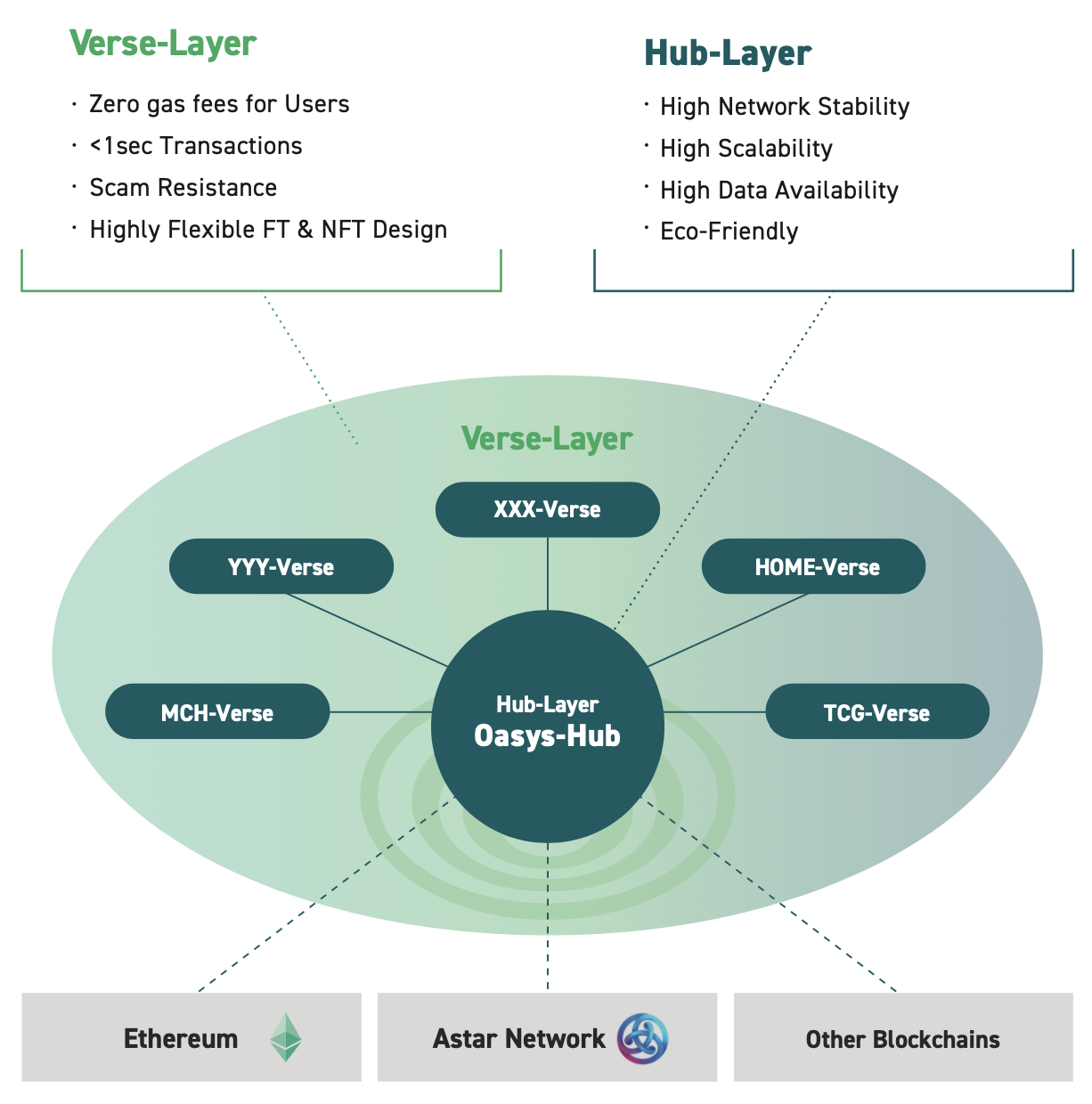
Oasys is composed of 3 main parts:
- Hub – Layer: This is considered Layer 1 of Oasys.
- Verse – Layer: This is considered Layer 2 of Oasys.
- Bridge: Is a bridge that transfers NFTs from Hub – Layer to other networks.
Hub – Layer
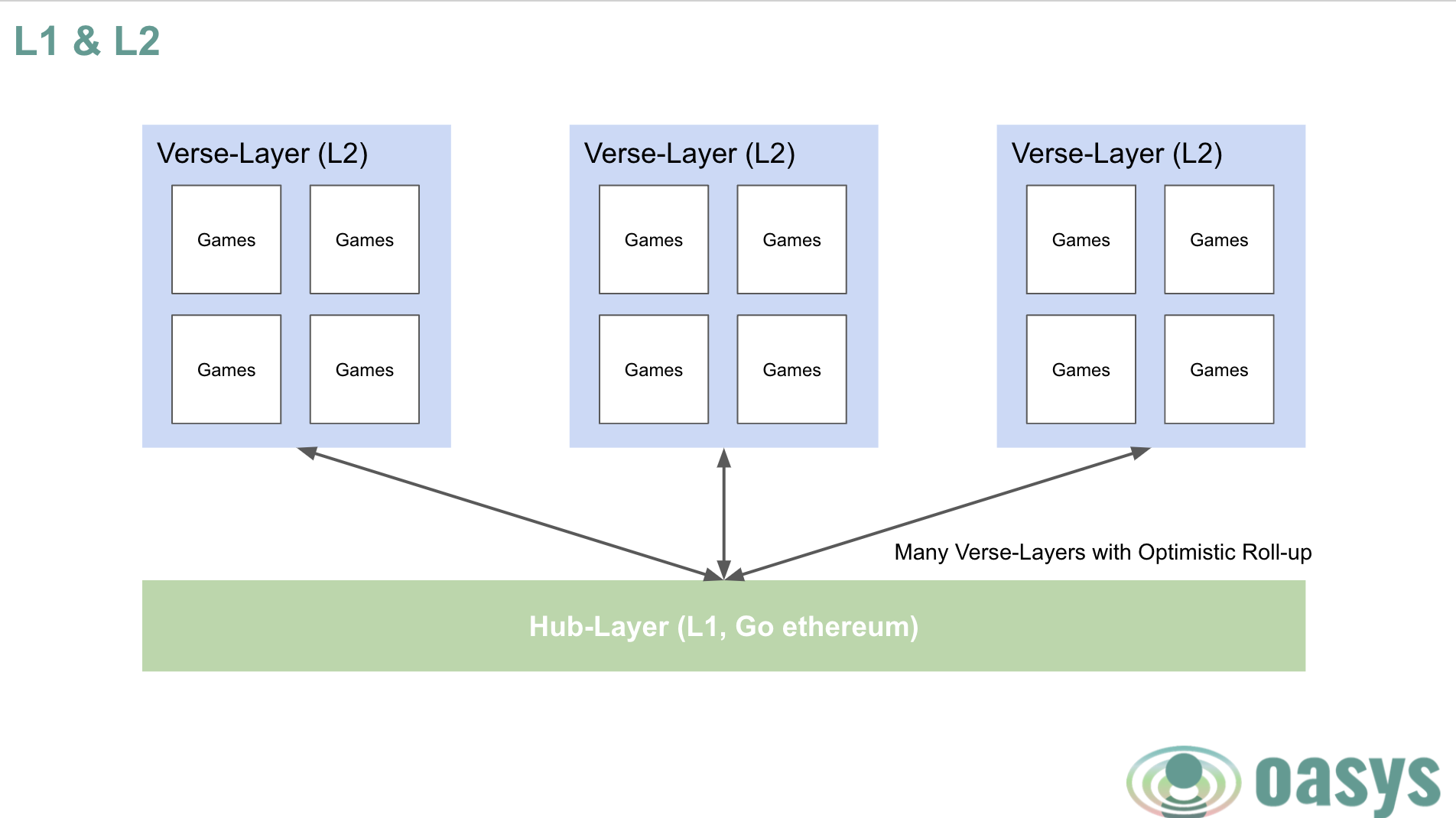
Hub – Layer is compatible with EVM so Oasys offers high scalability, high data source, and high network stability. The Hub – Layer takes 15 seconds to create a new block, the speed is also close to Ethereum, ensuring stable data transmission to globally distributed nodes.
Hub – Layer is specialized for storing and transaction data on Verse – Layer will be saved there. All data on Oasys is also stored on Hub – Layer.
Hub – Layer uses PoS mechanism so it will consume less energy and lower Gas costs for developers.
Verse – Layer
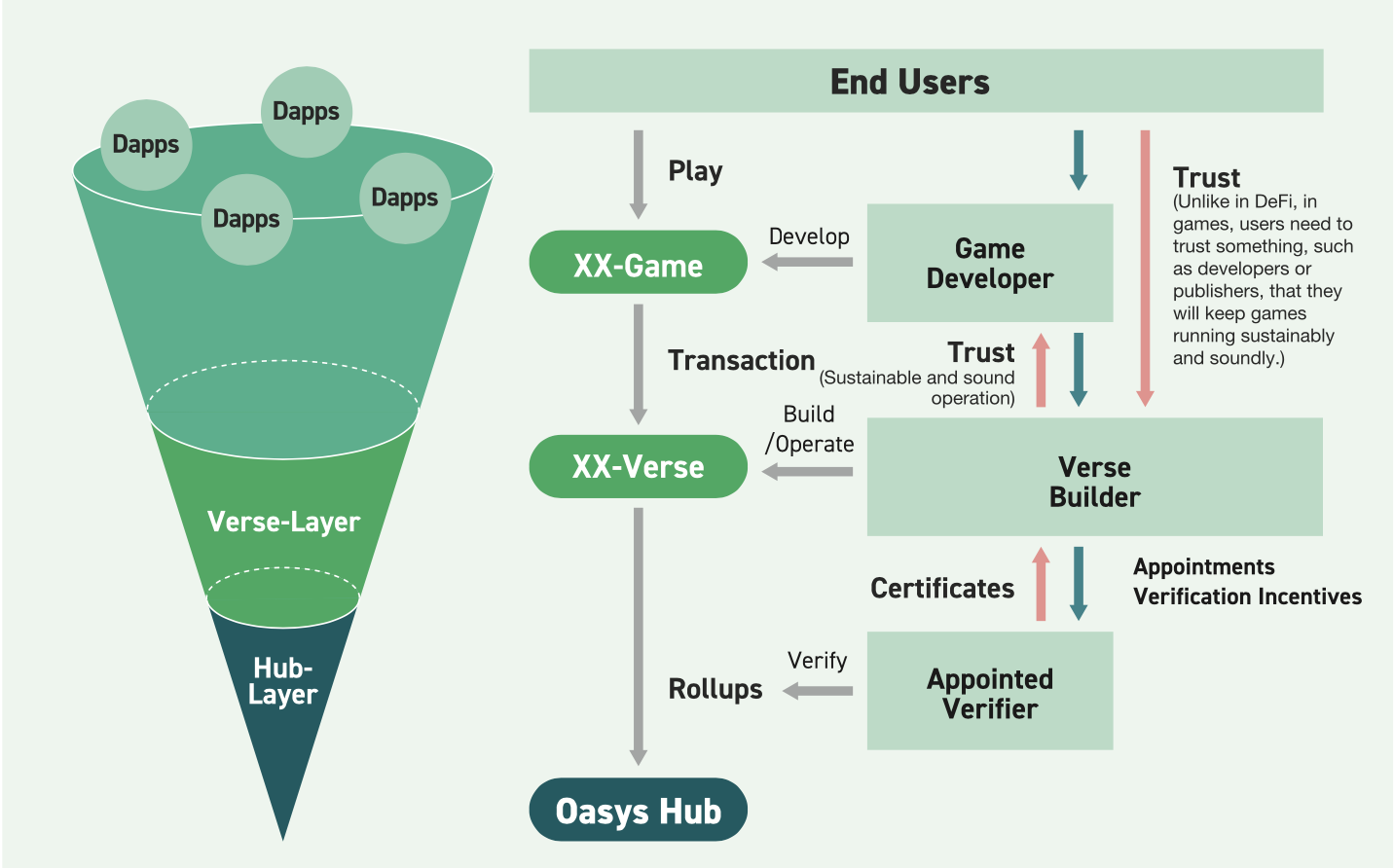
Verse – Layer is an Oasys Layer 2 extension solution and uses the Optimistics Rollup solution. Therefore, Optimistics Rollup establishes trust through two factors such as Verse Builder operating Verse – Layer and being protected from fraud by designated Validators.
Oasys removes the 7-day moderation period from Optimistic Rollups and allows traders to get instant approval like with Web2 products. This is faster than any other Blockchain and Layer 2.
All data on Oasys is saved on the Hub – Layer, so high data availability will be achieved and even if the Verse – Layer is lost, it can still be restored.
Bridge NFTs
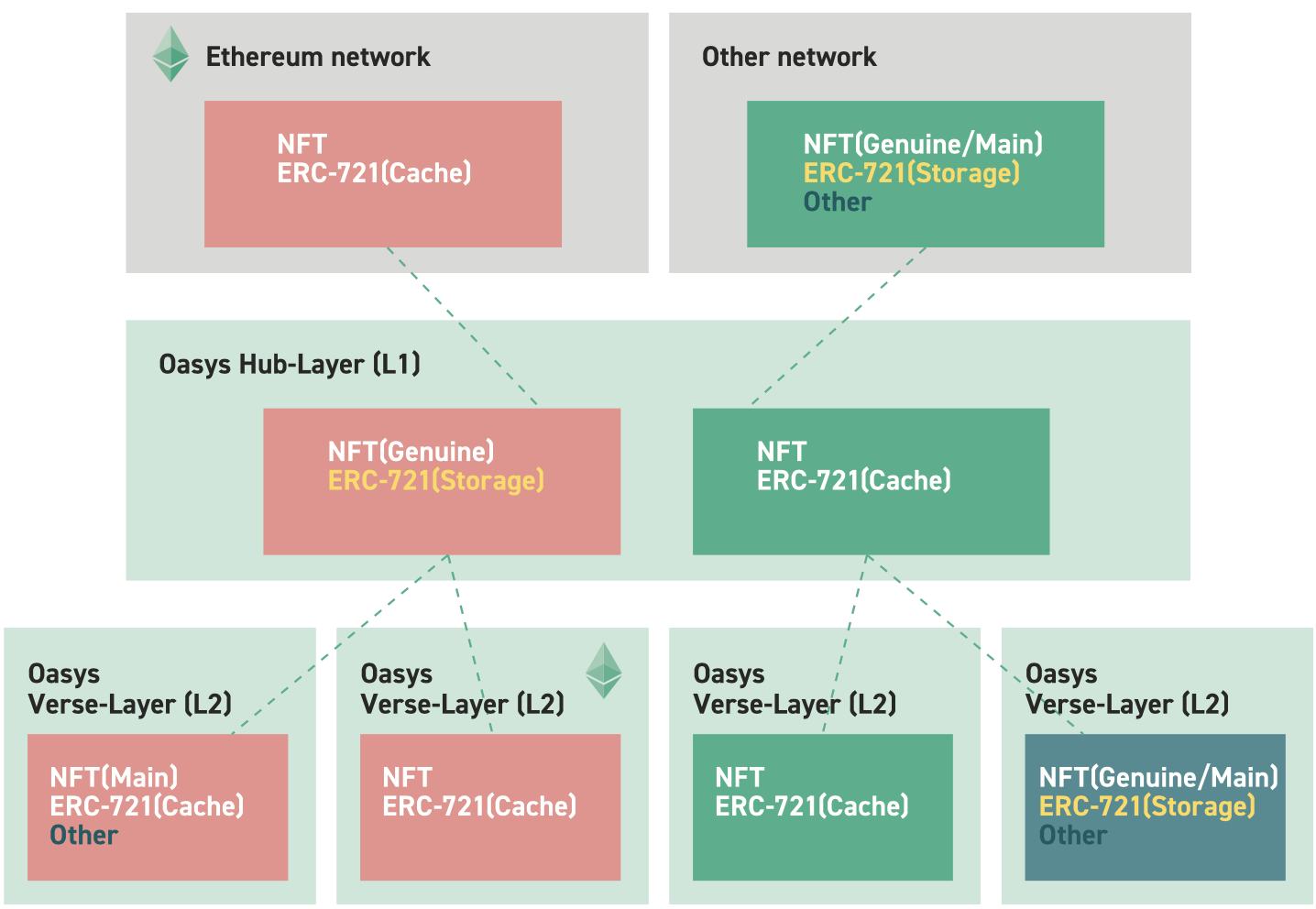
Bridge NFT is a bridge to move NFT from Hub – Layer to other networks.
Three types of token designs
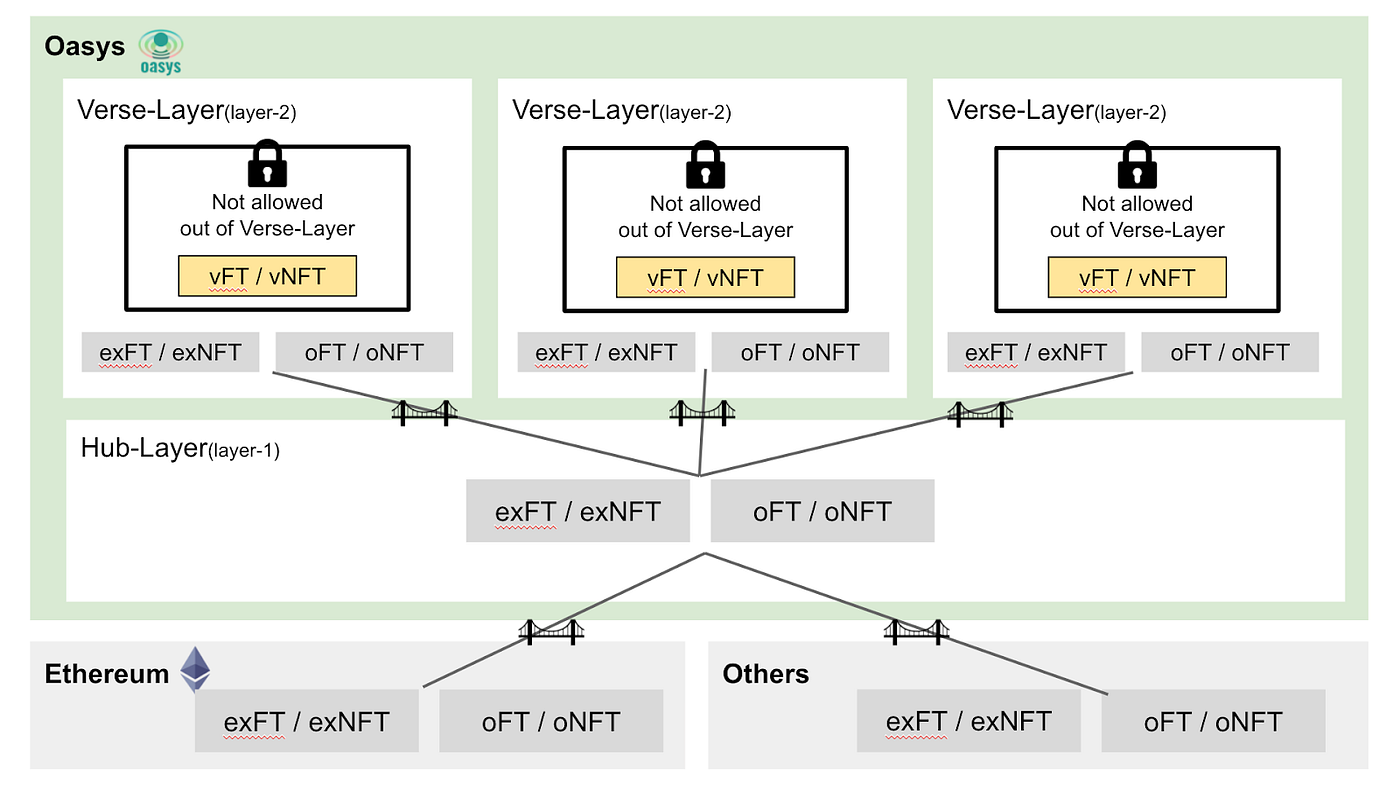
Fungible Token (FT) and Non-Fungible Token (NFT) are two essential assets for the ecosystem. Oasys offers 3 types of token designs for FT/NFT:
- vFT/vNFT: vFT/vNFT can be created on Verse-Layer. This token is used in certain Verses. FT (Game currency) and NFT cannot be cross-chained.
- oFT/oNFT: This oFT/oNFT can be created on Hub – Layer. These tokens are interoperable and available across all Verse layers. It is also possible to send to another Blockchain via Cross – chain Bridge.
- exFT/exNFT: exFT/exNFT is a token generated on the Oasys external network. They are available on Oasys Hub – Layer and Verse – Layer via Cross – chain Bridge.
In the Game on Verse – Layer, players can take advantage of these 3 token designs and use them flexibly for the Game. For example, vFT can be issued as an in-game currency and not be affected by DeFi outside of the game. Assets such as land and weapons can be minted as onNFTs, and game characters can be minted as vNFTs.
Compare Blockchain Defi and Blockchain Game
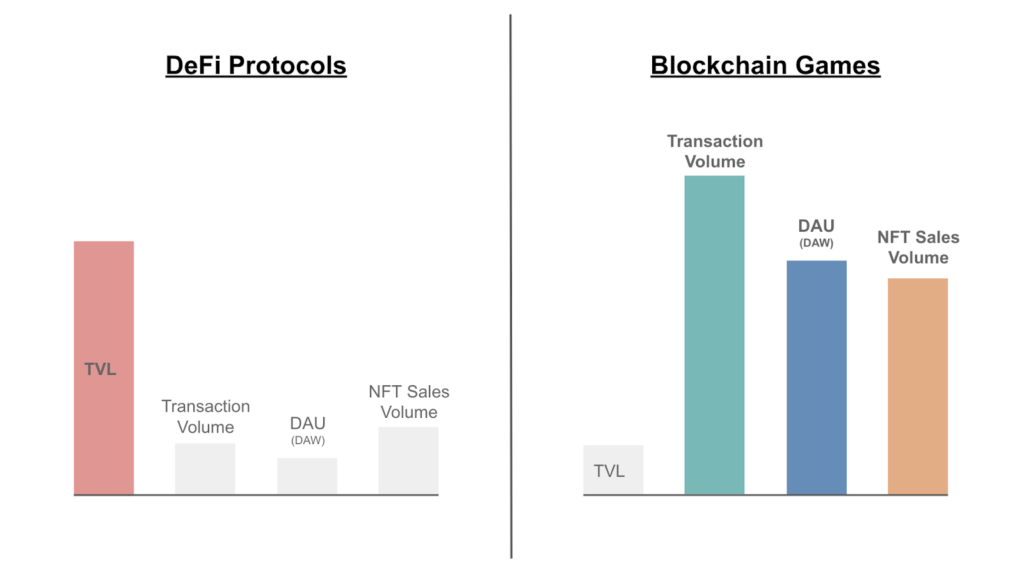
- TVL (Total Value Locked): TVL refers to the amount of money locked in a specific Smart Contract and is a key measure of DeFi’s appeal. Considering the lock-in characteristics of DeFi, TVL is a reasonable indicator of DeFi’s reliability and popularity. In short, TVL is not suitable for Blockchain Games.
- Transaction Volume: The transaction volume in the Game is much larger than in DeFi. Transaction volume will be extremely significant compared to DeFi to create full-scale blockchain games with widespread adoption. Blockchain needs to be designed to accommodate this.
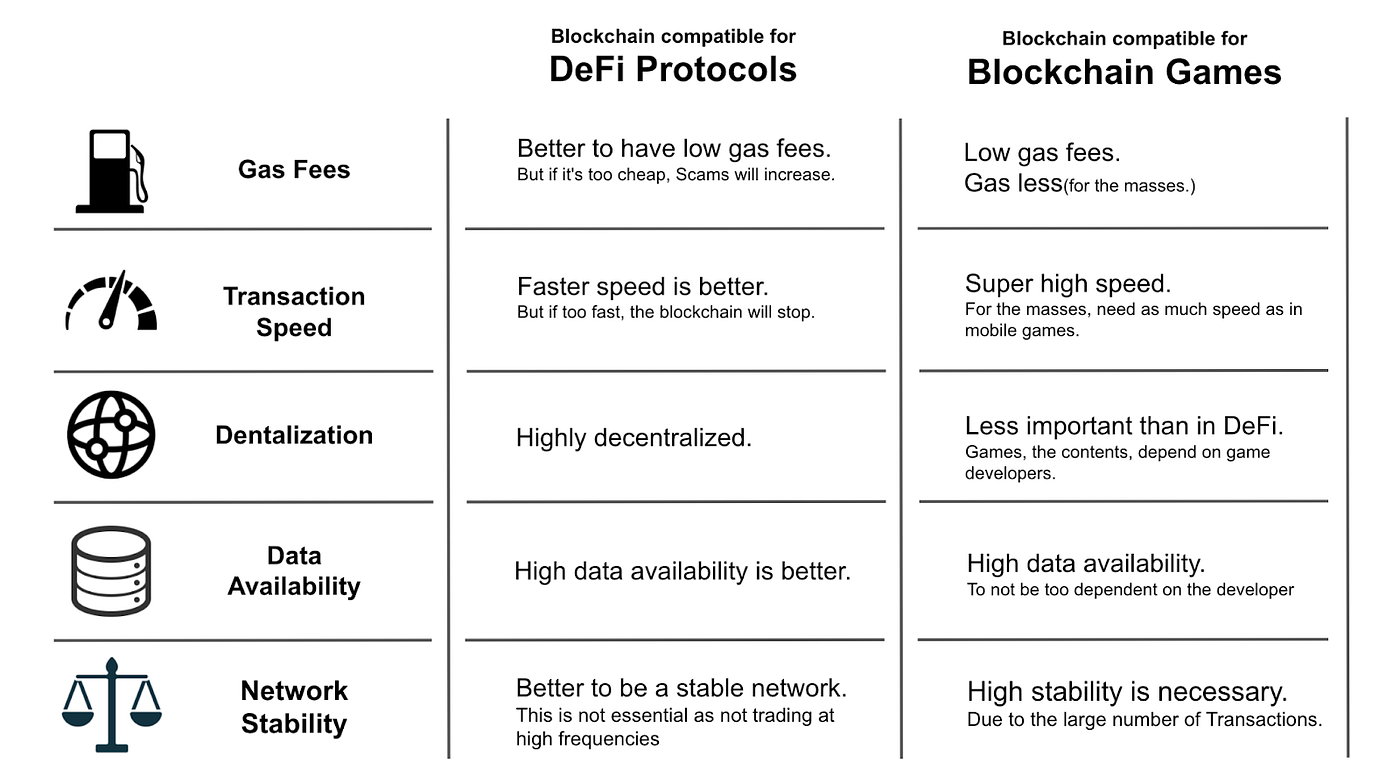
- DeFi Blockchain: Because DeFi locks assets, the level of security is most important. Therefore, decentralization and data availability are prioritized, while network stability and transaction speed are less important.
- Blockchain Game: To be suitable for Blockchain Games, it needs to be widely adapted, transaction speed must be as fast as Off-chain, Gas fee is 0 and stable.
Development Roadmap
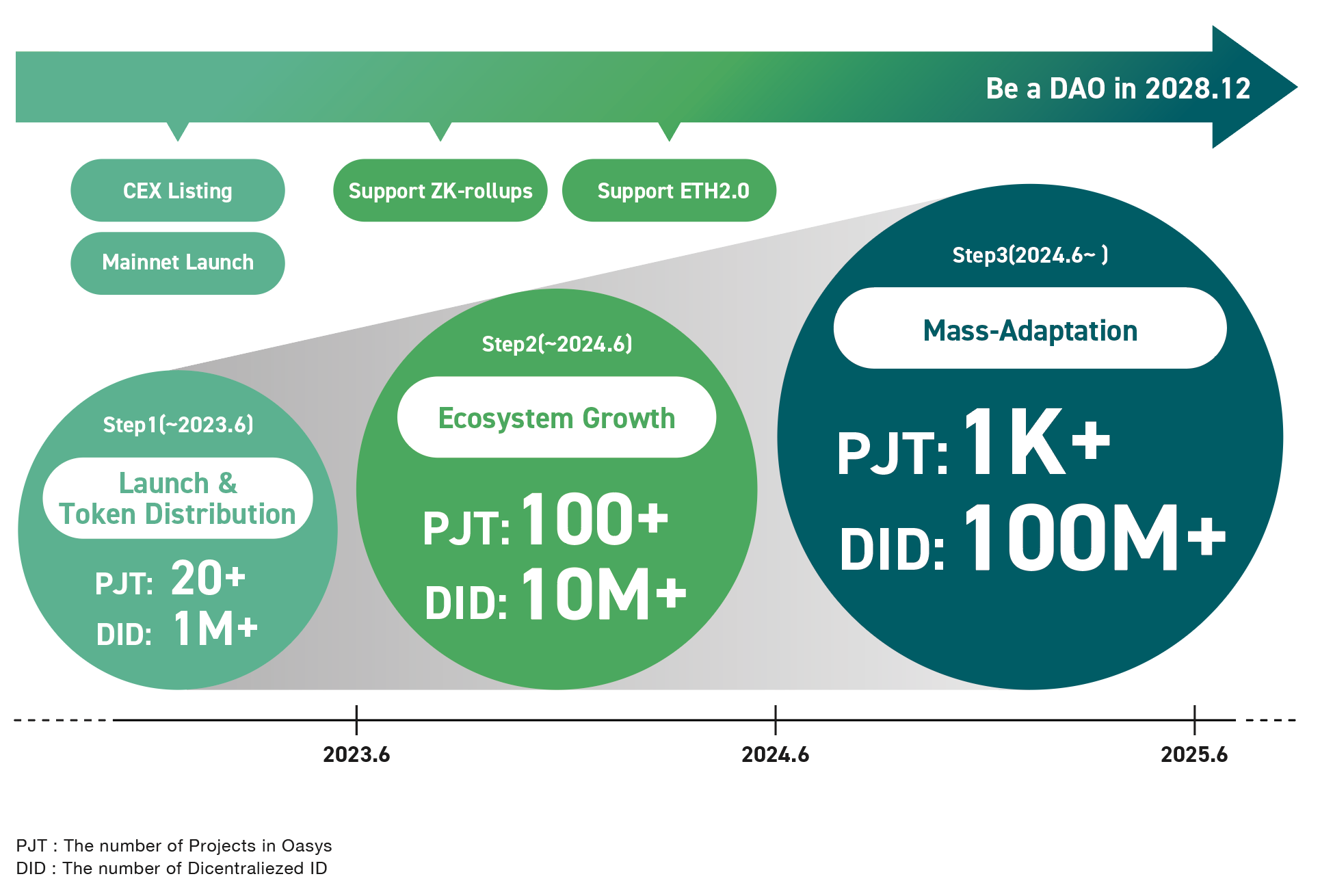
The project’s development roadmap until 2024 is as follows:
- Implement Zk – Rollup support, support ETH 2.0 and develop the ecosystem.
- Towards Mass – Adaptation.
- The goal is to become a fully DAO-run Blockchain by 2028.
Core Team
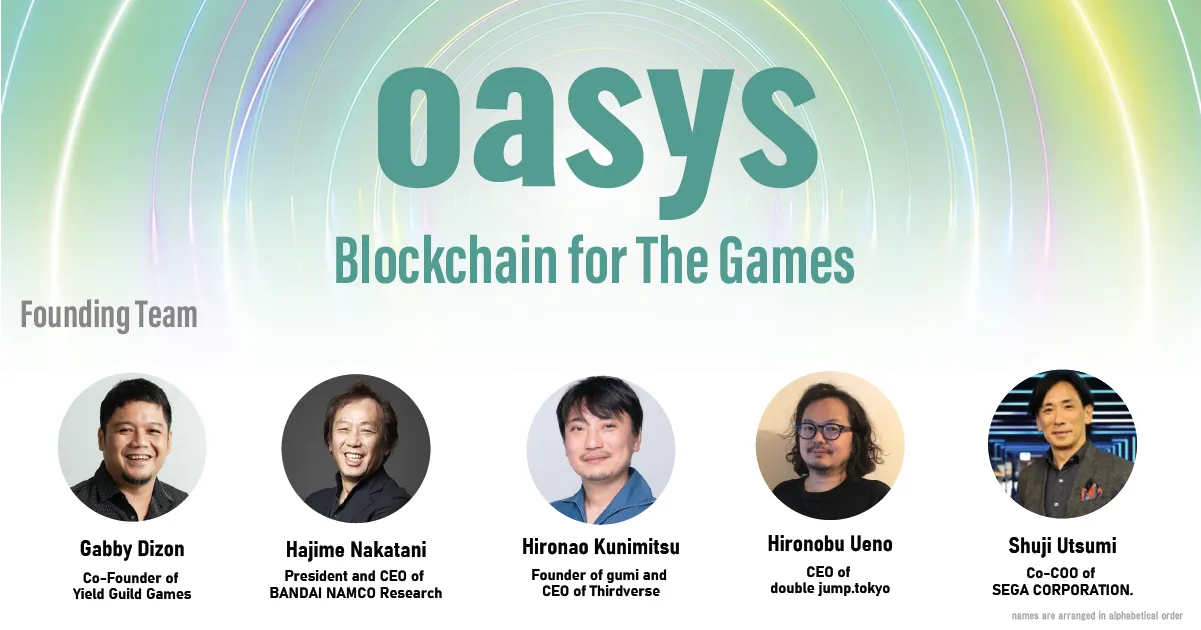
Initially, the project had 21 members, typically including 5 core members:
- Gabby Dizon: Co – Founder of Play to Earn, Yield Guild Games.
- Hajime Nakatani: He is currently Chairman and CEO of BANDAI NAMCO Research.
- Hironao Kunimitsu:Currently Founder of Gumi and CEO of Thirdverse.
- Hironobu Ueno:Currently the CEO of Double Jump.tokyo.
- Shuji Utsumi: Is an entertainment business innovator and Co – Founder of PlayStation, Co – Founder of Q Entertainment and Co – COO of SEGA CORPOration.
Investor
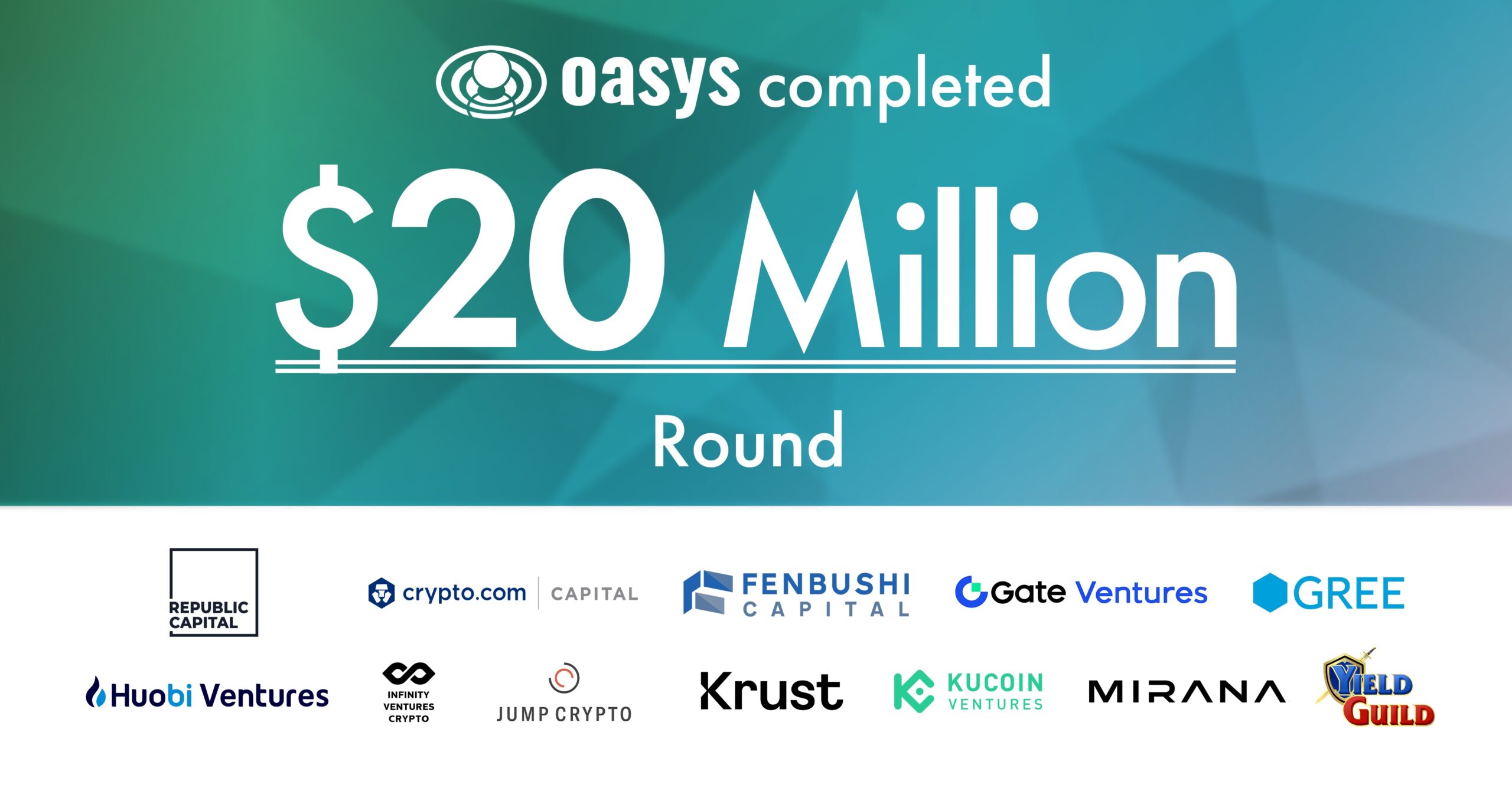
On July 7, 2022, the project successfully raised $20M in the Public Sale round, led by Republic Capital. There is also the participation of Jump Crypto, Crypto.com, Huobi Ventures,..
Tokenomics
Overview of Oasys Token
- Project name: Oasis
- Token code: OAS
- Blockchain: Oasis
- Token classification: Update,..
- Contract: Update,..
- Total Supply: 10,000,000,000
Token Allcation
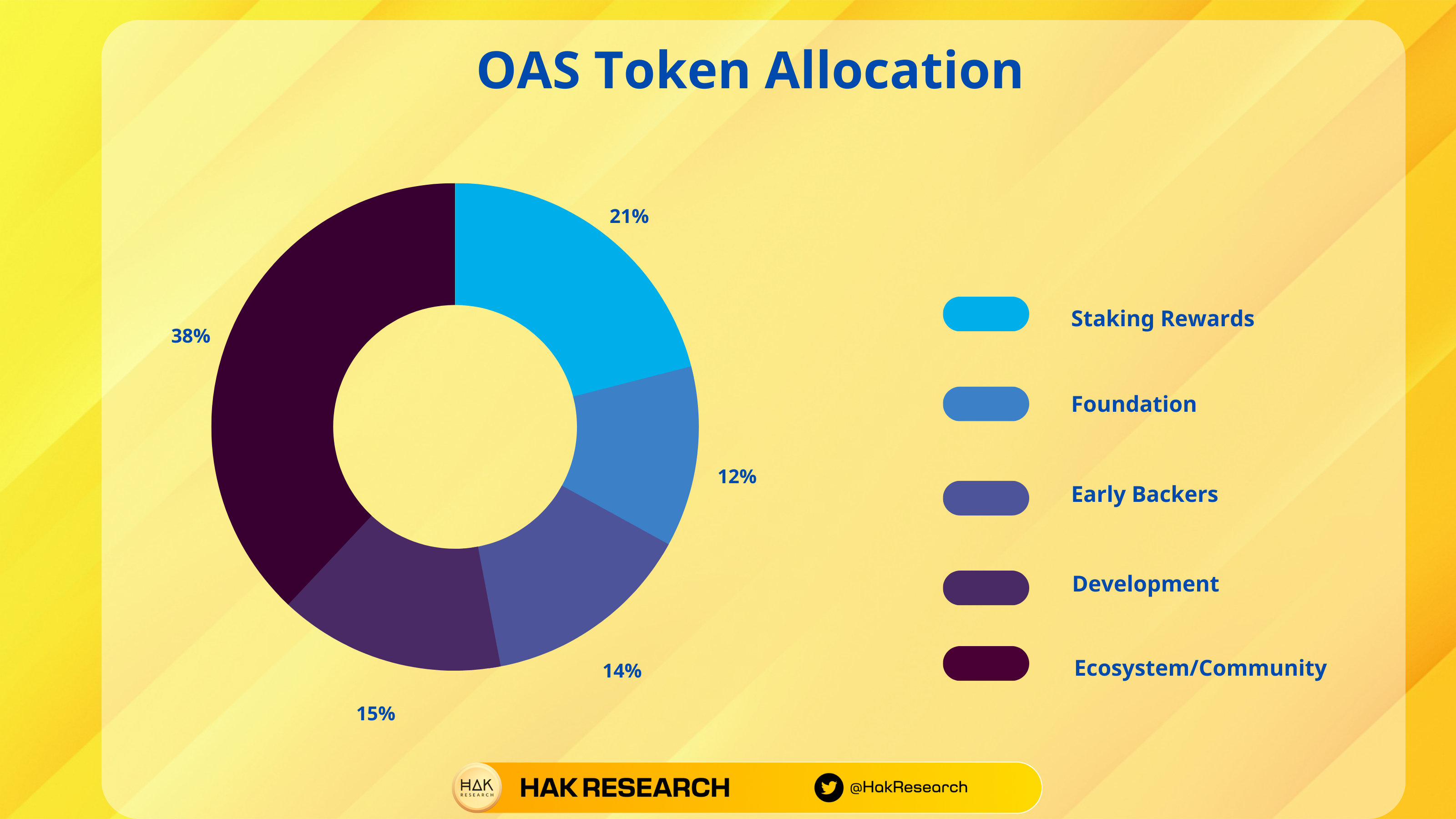
Project tokens will be allocated as follows:
- Staking Rewards: 21%
- Foundation:12%
- Early Backers: 14%
- Development: 15%
- Ecosystem / Community: 38%
Token Release
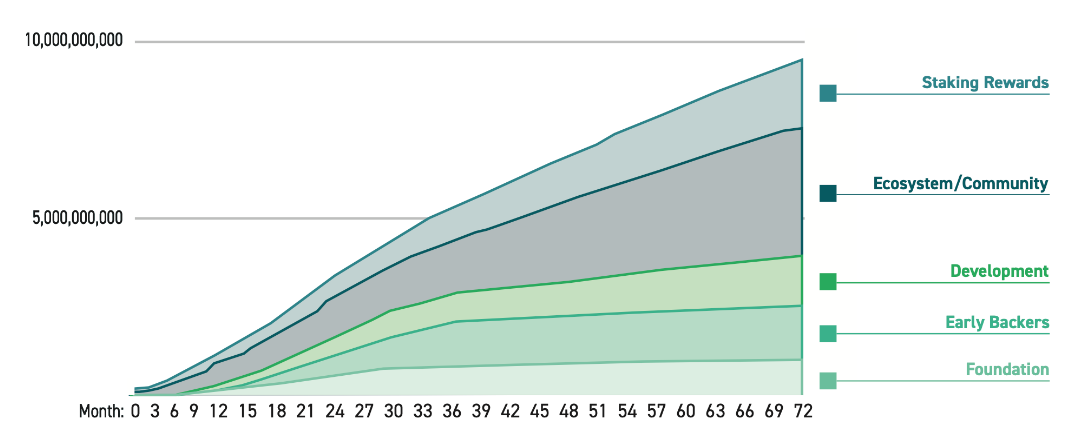
The OAS Token payout schedule will be as follows:
- For Development: Tokens will be locked for 6 months, 20% unlocked in June 2023 and the remaining 80% will be paid in installments until June 2025.
- For Early Backers and Foundation: Tokens of these two groups will be locked for 1 year and paid in monthly installments of 4% within 2 years.
Token Use Case
The benefits of holding OAS tokens are:
- Gas Fee: OAS is used to pay for transactions from Verse – Layer to Hub – Layer and vice versa
- Governance: OAS Token holders are involved in the project’s governance decisions.
- Stake: Users can Stake OAS to receive rewards. With 1 million OAS Stake, users can build a Verse – Layer, and 10 million OAS can become a Validator.
- Payment: OAS token is used to pay for transactions in the Game built on Oasys Blockchain.
Exchanges
Currently, OAS tokens are being traded on exchanges such as Kucoin, Gate.io, OKX, Bybit,…
Project Information Channel
- Website: https://www.oasys.games/
- Twitter: https://twitter.com/oasys_games
- Discord:
Summary
Oasys is a Blockchain developed for GameFi. The project has a reputable founding team, all of whom have experience in the Game field. Thus, Weakhand has clarified what Oasys is, hoping to help readers during the Research process.


